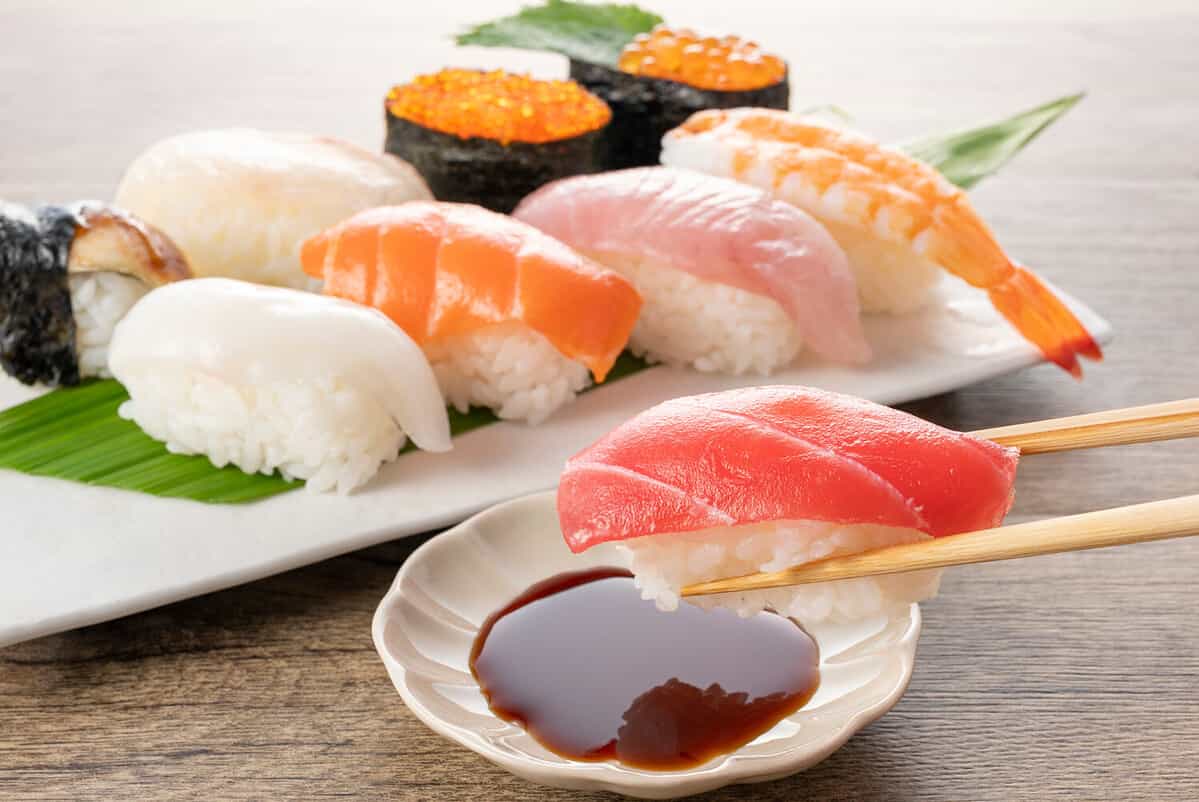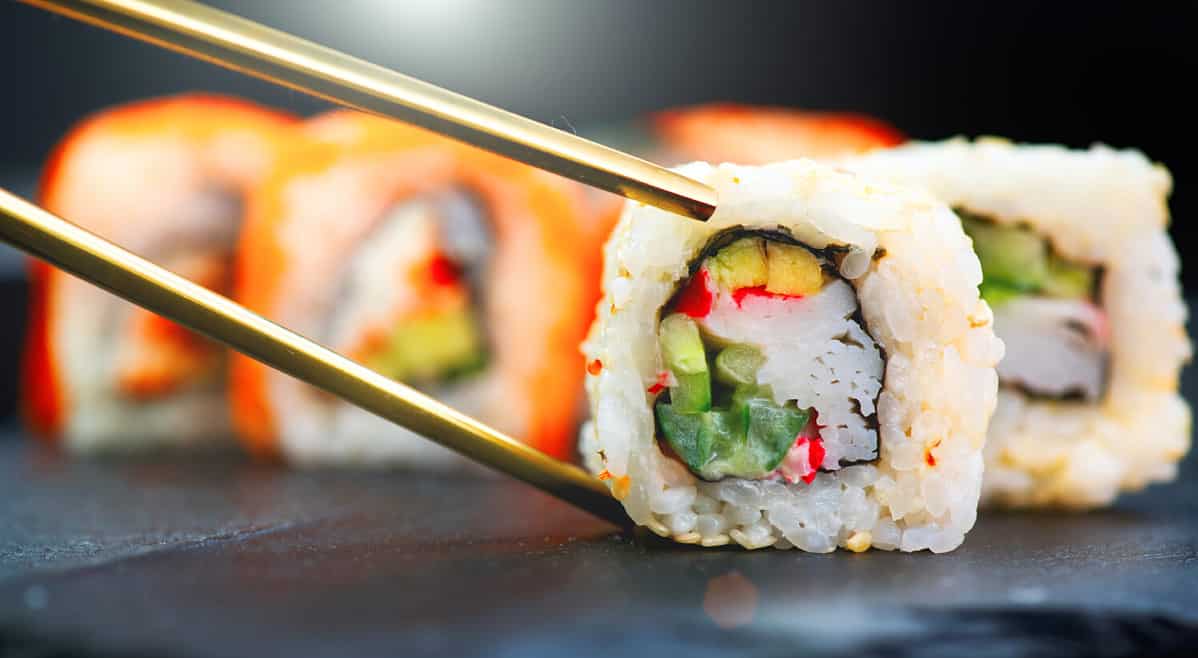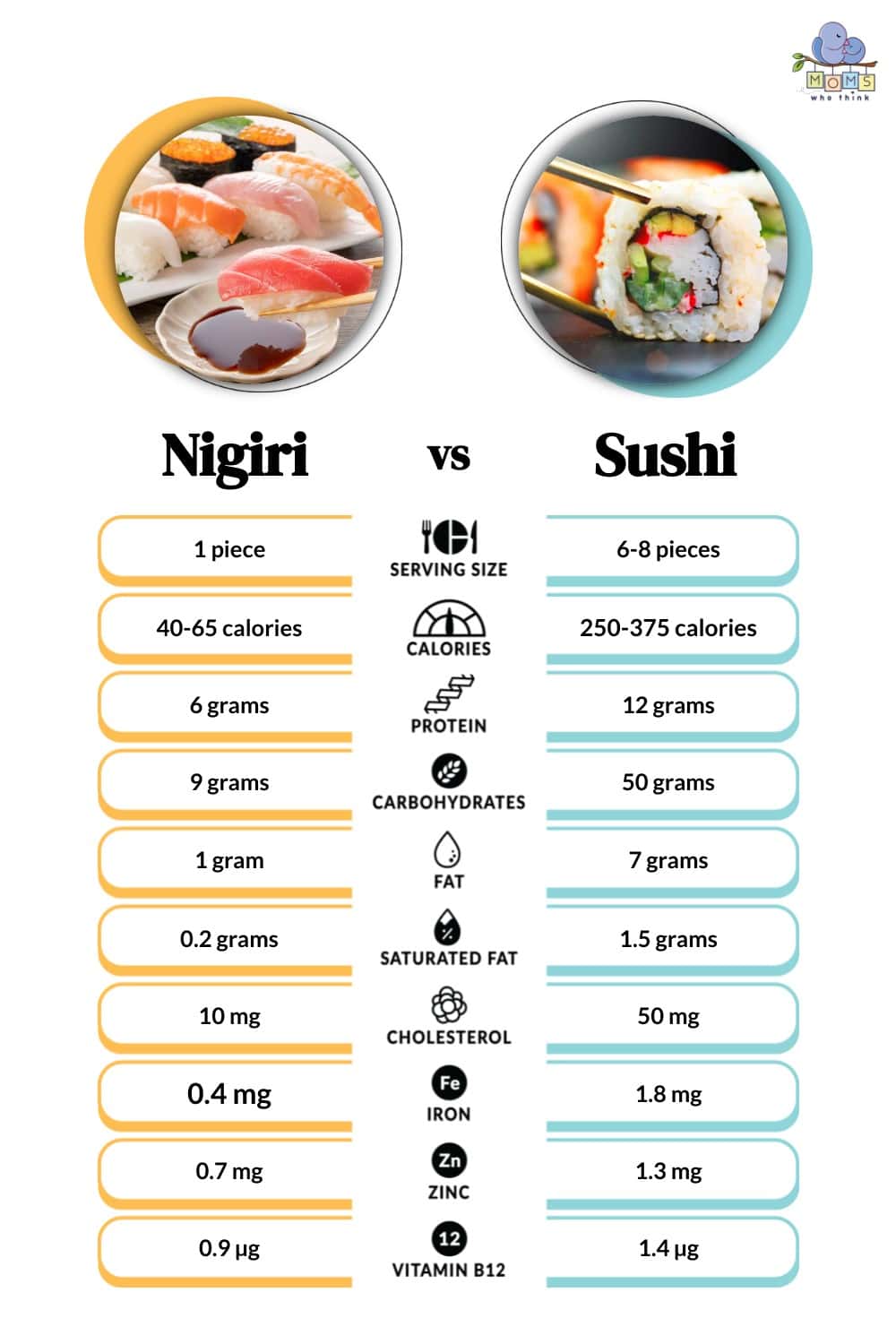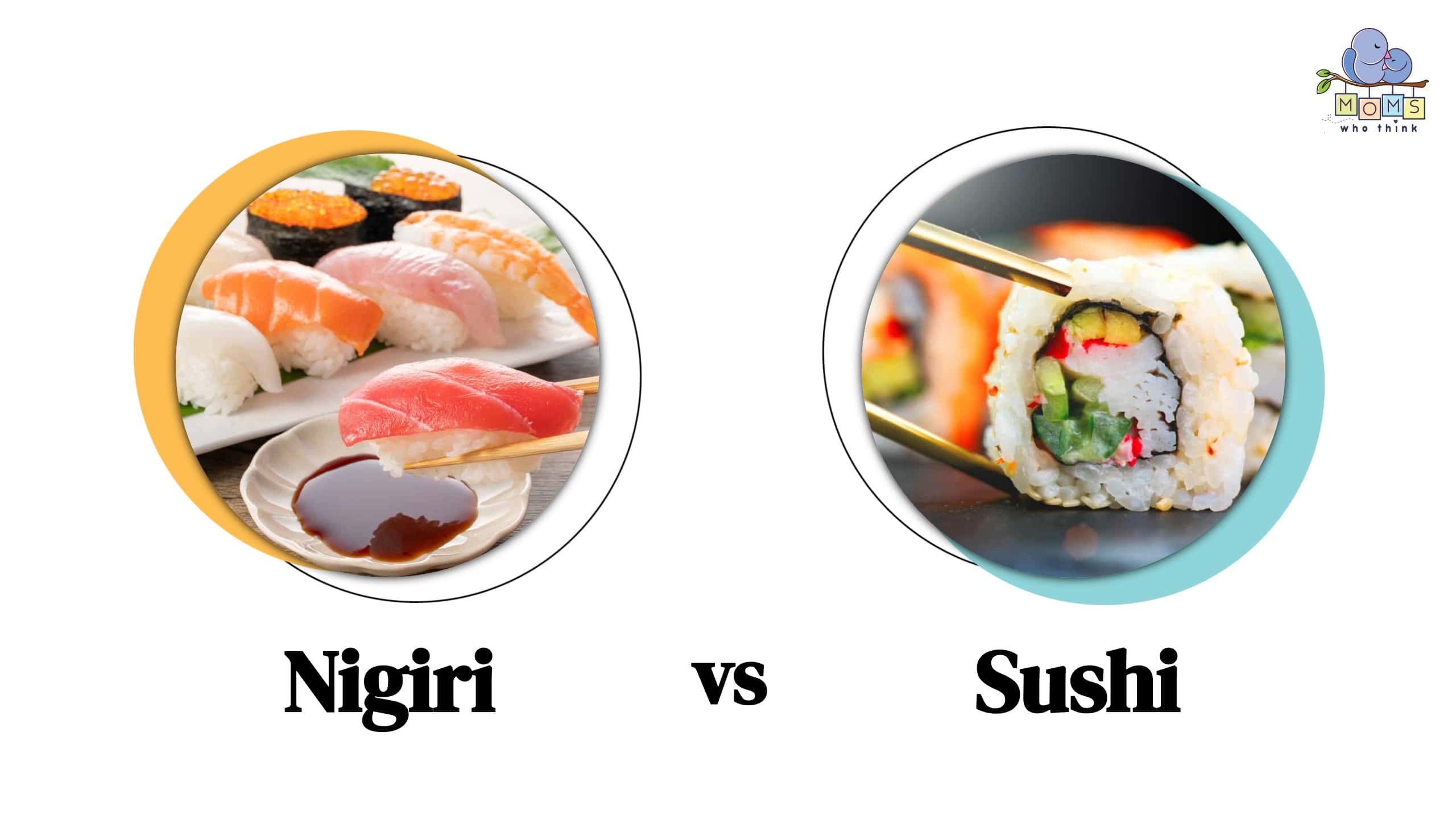Nigiri vs. sushi is a little bit of a trick question because nigiri is a type of sushi. But, for the sake of this explanation and to understand the difference, when we mention sushi we're referring to a sushi roll. The main difference between nigiri and sushi is that nigiri is a ball of rice topped with wasabi and a piece of fresh raw fish or other seafood, and sushi is rolled-up rice with a seafood or meat option and other added ingredients. Some commonly used ingredients in sushi are avocado, cream cheese, and other vegetables. Today, we're going to take a look at the difference between nigiri and sushi when it comes to their ingredients, taste, and nutritional value.

For the best experience, it is suggested to eat nigiri upside down. It is also traditionally eaten with your hands, not chopsticks.
©Chiristsumo/Shutterstock.com
Nigiri Vs. Sushi: Ingredients
Nigiri is going to be a plainer type of sushi. Often, nigiri is ordered to be able to taste the quality of the fish. It is just rice, wasabi, and the fish being served. Common types of seafood served on nigiri include tuna, salmon, shrimp, and eel.
In sushi, the ingredients typically include rice, seaweed (nori), fish, and vegetables. In some sushi rolls, they are also drizzled with a sauce. What sets these two apart is that sushi tends to have significantly more ingredients than nigiri which has only three ingredients.

Sushi always contains some type of rice.
©Subbotina Anna/Shutterstock.com
Nigiri vs. Sushi: Taste
When it comes to taste, nigiri is going to be very light. Because of its simple ingredients, you don't have an ingredient that outshines the other. It's a simple yet delicious-tasting dish that allows you to enjoy the raw seafood.
Sushi on the other hand has lots of different flavors. It will always vary depending on the type of roll you order. For example, a California roll is going to be significantly different than a dragon roll. A California will be more basic made with rice, seawood, avocado, and crab meat. A dragon roll will have a lot more flavor because it's made with rice, seaweed, fried shrimp, cucumber, sliced avocado, and drizzled with a sauce.

Nigiri vs. Sushi: Nutrition
Because nigiri is a simpler sushi with fewer ingredients, it is going to have fewer calories. You can find sushi rolls that are also low in calories due to their ingredients. But, if you are ordering rolls that have fried foods and sauces, you'll find that the calories quickly add up.
Often, nigiri will also have a higher protein content due to having larger pieces of fish. Typically in a sushi roll, you are getting small pieces of seafood that will not provide as much protein. That is unless you order a rainbow roll for example, which is topped with tuna, salmon, and imitation crab.

